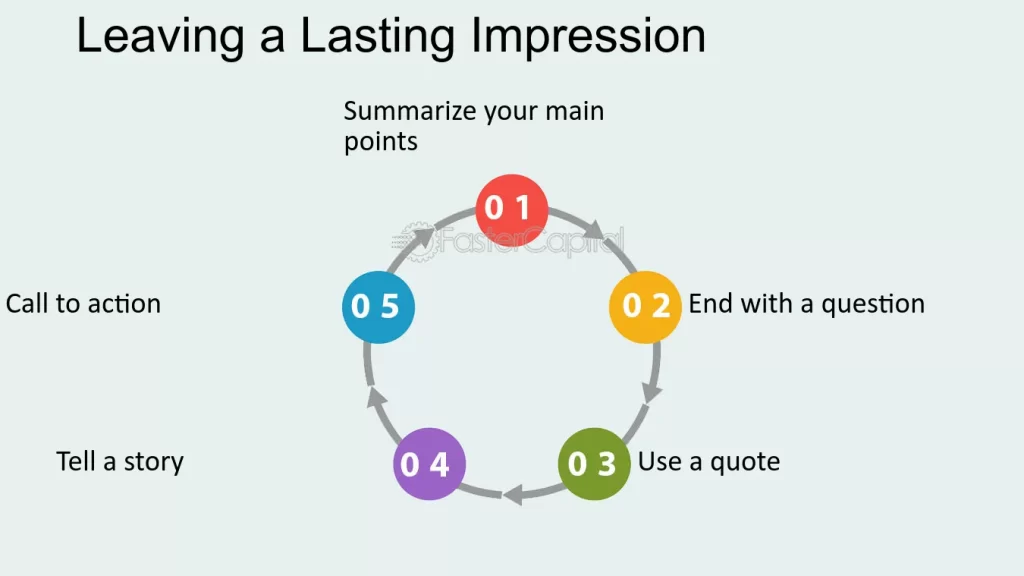PERFECTING THE ART OF FIRST IMPRESSIONS: YOUR INTRIGUING HEADLINE AWAITS
Engaging Introductions: Capturing Your Audience’s Interest
The first impression is what makes or breaks your blog post. An interesting introduction hooks them the very moment they read it, which gives them a thought of continuing reading the rest of it. While writing this crucial section, remember that whether they stay or leave, it’s all based on your first impression. Start with a statement or a question or fact that commands attention. Use emotional triggers or point out your audiences’ pain to give them instant attachment.
For instance, envision your reader searching for solutions to some problem. Address this in the first lines and show empathy. This is one of those absolutely crucial elements that form a long-term impression. Clearly outline what your post’s purpose is, pointing out that insights are coming. People value clarity and this ensures they know what to expect. A compelling introduction doesn’t just engage—it sets the tone, creating a positive first impression that encourages your audience to dive deeper into your content.

Crafting Informative and Cohesive Body Content
While the body of your blog contains the actual substance, making sure the audience is still interested after reading the first impression is equally important. A well-structured body builds on the expectations raised by the introduction, creating a seamless flow of information for the reader. Break up your content into more digestible sections-leadership begins with headings that reinforce that first impression of professionalism and coherence.
Within each section, focus on delivering valuable insights. Use data, anecdotes, and examples that resonate with your audience. A relatable story can amplify the positive first impression you’ve created. Break your text into smaller paragraphs to enhance readability—nothing ruins a good first impression faster than a daunting wall of text.
Transitions are critical here; they maintain the logical flow of your content. For instance, if you’re explaining how to make a strong first impression during interviews, transition smoothly to practical tips like body language or communication skills. This ensures readers remain engaged and don’t lose the momentum generated by your initial first impression.
Using some charts, infographics, or images can be an effective way to enhance the impact of your message. They help support your content, and most importantly, contribute to creating a memorable first impression of the quality of your blog.

Powerful Closures: Leaving a Lasting Impression
You will then reach the end of your blog, and this is where you remember that the last impression would be as important as the first impression. Your conclusion is where you can finally leave an impact before your readers close the link. Summarize your blog post, summarizing all the main points, mainly reinforcing takeaways. This repetition ensures that your positive first impression remains and that readers will not forget your message.
Do more than a simple summary—use the conclusion to inspire action. Whether it’s getting them to comment, share, or implement your suggestions, call-to-action ensures people engage further with your content. When readers act on what they’ve read, that leaves a far deeper impression of your expertise.
End with a question or an interesting statement. This strategy will arouse more interest from the readers and make them reflect, hence leaving the content within their minds while acting as a first impression for future meetings. A good conclusion makes any blog more shareable and gives readers a reason to return with more interest, showing the strength of a well-crafted first impression.

How to Optimize Your Blog for SEO and User Engagement
Now that you know how important the first impression is in a blog post, it’s time to focus on optimizing it for search engines and readers. Key ways to boost visibility of a blog post are:
Use your primary keyword, which is “first impression.” Place it strategically in the title, headings, and meta description and naturally within the content. Prevent keyword stuffing but aim for organic balance.
Internal and External Links: Linking to authoritative sources and related content enhances credibility. For example, when discussing the psychology of a first impression, relate it to the relevant studies.
Readability: Use short sentences, bullet points, and subheadings. This helps build a reader-friendly structure and can give a good first impression to the visitors coming to your page.
Mobile Optimization: Most readers access blogs on their phones. Make sure your layout and formatting look great on mobile devices.

Psychology of First Impression
Why is a first impression important? According to research, people decide within seconds of interaction whom to believe and whom not to believe. A first date or a blog post – the first encounter always builds expectations. In the realm of content writing, it means titles that grab, introductions that impact, and layouts that really come alive.
The readers judge the quality of a blog through visual elements, the tone of writings, and how fast they find value when visiting the blog. Aligning content to cater to their needs makes the first impression even stronger and encourages them to explore further.

Real-Life Examples of Great First Impressions
Think about Apple as a brand. Their website and marketing materials give an impression of innovation and quality in their very first glance. Similarly, the blog should speak of professionalism and value from the very beginning. Examples would be relatable to help the readers understand that how important the first impression is to one in many ways, say job interviews or other social media presence.

Making Every First Impression Count
Whether it’s the opening lines of your blog post or how you structure your content, mastering the art of the first impression is vital to success. By capturing the audience’s attention, offering meaningful insights, and ending on a high note, you are guaranteed to make readers impressed and wanting more.
Remember, your blog’s first impression goes beyond words-it has visuals, user experience, and the general atmosphere of your content. Focus on making it seamless and engaging from start to finish. With each blog post, strive to make the kind of first impression that not just attracts readers but keeps them coming back for more.

Tips on How to Make a Good First Impression of Your Blog
- Design and Layout:
The first thing your visitors notice is the looks of your blog. Your blog should look fresh, clean and neat with a balanced color palette, readable fonts and a well-intelligent navigation structure. A visually appealing design makes an effective good first impression.
- Headline Mastering:
Your blog headline is the final hook. It’s the gateway to your content, so it needs to pique curiosity instantly. Headlines with numbers, questions, or emotional triggers often make a more lasting first impression and boost click-through rates.
- Speed and Performance:
A slow-loading blog can torpedo even the best first impression. Optimize the page speed in every given way-with image compression, caching, and reliable hosting. Be sure your blog performs without tangles across all devices.
- User Engagement Features:
Commentary section, poll, or quiz- the interactive element could be anything. These add to the user experience but also contribute towards a lively first impression of further interaction.
- Visibility of credibility:
This can surely strengthen your first impression. Leave an author bio at least, a testimonial, or social evidence. Linking to other credible sources is an added assurance towards one’s knowledge.
Write in a conversational style to connect with your target audience. A familiar tone is a great first step to making readers feel at home and earning their loyalty.

Learning How the First Impression Influences SEO
- Bounce Rate :
Impressed readers will take their time to stay much longer than expected. Lowering your bounce rate signals quality content for search engines.
- Time on Page:
A captivating first impression encourages readers to explore your content, boosting this important engagement metric.
Social Sharing:
Readers are more likely to share content that impresses them, increasing your reach and backlinks.
Optimizing the first impression isn’t just about aesthetics; it’s about creating a seamless experience that aligns with both user expectations and search engine requirements.

Continuous Improvement for Lasting First Impressions
Remind yourself that creating a solid impression isn’t a one-time endeavor; it’s a continuous process. Update your content regularly so that you will keep it fresh and valuable. Analyze feedback and metrics from users to find what can be improved.
Every post is an opportunity to impress your audience, establish yourself, and build trust. By focusing on the first impression, you elevate your blogging strategy to enjoy long-term success.

The Role of Emotional Connection to Your First Impression
An emotional connection is a strong tool for enhancing the first impression your blog leaves. Readers often identify with the content talking directly to their feelings, desires, and struggles. The moment you touch on their pain points or aspirations in the first lines, you immediately lock in their attention and establish a basis for trust. For example, beginning your blog with a anecdote or a thought-provoking question can arouse the reader’s curiosity or evokes his empathy. That way, it will offer a memorable first impression. This connection not only keeps them engaged but also develops a loyal audience in time, as they feel understood and valued.

How Visual Elements Influence the First Impression
Visuals are significant in making a first impression of your blog on a reader. High-quality images, sleek graphics, and structured formatting all scream professionalism and attention to detail. A cluttered or poorly designed page can turn visitors away, no matter how valuable your content may be. On the other hand, visuals that support your brand and illustrate the story make your blog visually appealing and interesting. An infographic can simplify complicated topics, while a color scheme consistent with your brand increases recognition. A well-conceived visual strategy makes your first impression stronger and drives readers in to learn more.

Building an Impression That Drives Actions
A great first impression isn’t just about aesthetics or engagement; it is about an action feeling. Whether you want people to comment, subscribe, or share your content, the early moments of interaction are foundational. With this approach, you can align your call-to-action with your first impression that comes from the content you produce to achieve better conversions. For example, if you are writing about a blog post addressing a common pain point, this should resolve when actually concluding with a solution-focused CTA. When your tone and intent line up from start to finish, the first impression made feels real and interesting enough to make people act.

The Long-Term Impact of a Great First Impression
While a first impression is immediate, its effects are long-lasting. Readers who have a positive initial experience are more likely to return to your blog, explore other posts, and recommend your content to others. Over time, these interactions build your brand’s credibility and authority. A consistent focus on delivering value from the outset creates a ripple effect, where each new first impression strengthens your overall reputation. This is crucial in keeping the growth live and palpable in today’s competitive blogging scenario.

Making the Right Impression: The Balancing Act of Authenticity and Strategy
Balancing authenticity and strategy could be what makes a first impression impactful. While your blog needs optimization for SEO and engagement, such efforts must never overpower the authentic voice of your content, with readers always quick to pick up on when keyword trumpeting over meaningful communication happens. Instead, use your first impression to showcase your unique perspective and expertise. A personal yet professional blog hits all the right chords, leaving readers with a lasting impression of trust and authenticity.



